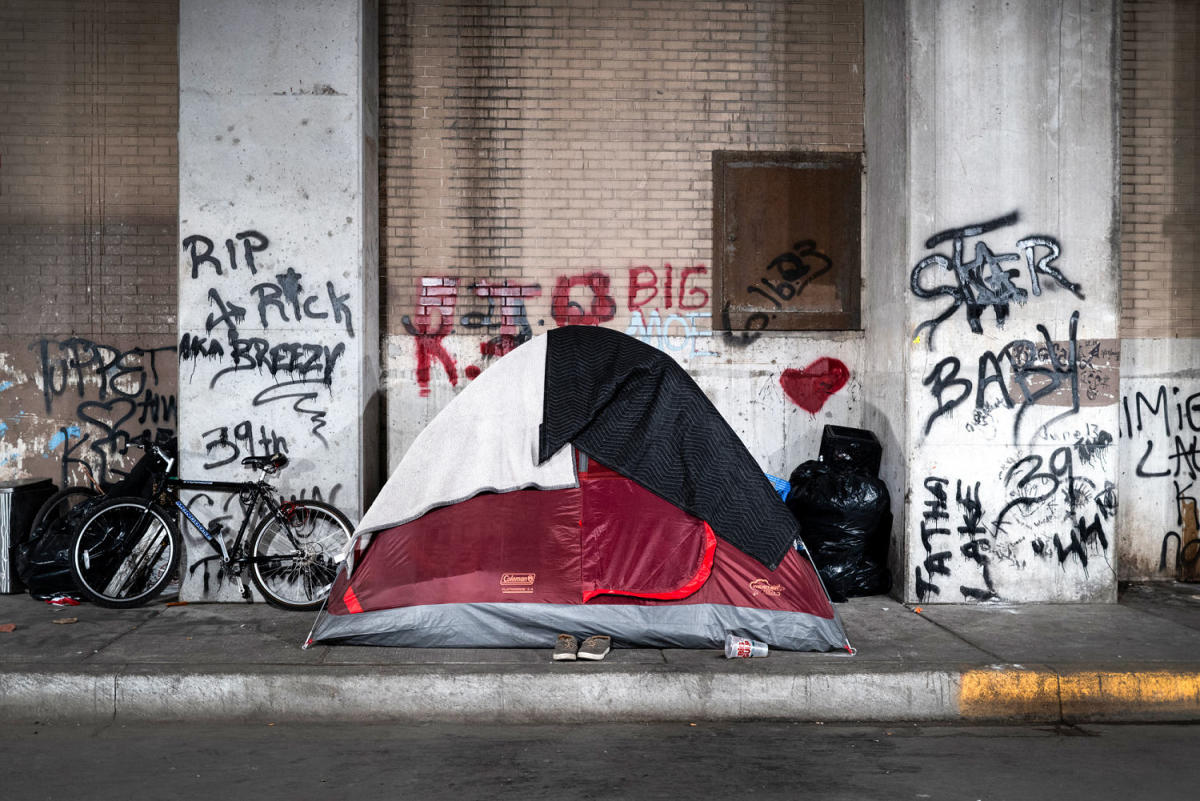Nearly 19,000 people became homeless in Chicago in January, more than three times as many as last year, as the city struggled to accommodate thousands of newly arrived migrants in its shelter system.
An annual city survey released Friday — a snapshot of estimated homelessness in Chicago on a single night — found that 18,836 people were without permanent housing as of Jan. 25, up from 6,139 the year before.
The survey figures are based on the Department of Housing and Urban Development’s definition of homelessness, which includes unhoused people and people living in shelters.
Most of the increase was driven by thousands of new migrants arriving in Chicago in need of shelter. The migrants have faced delays in obtaining work permits, if they even qualify for the permits, a crucial step in obtaining housing.
While the city has “continued to work steadily to prevent and end homelessness,” this year’s count reflects “an increased need for housing and services for the homeless” not only in Chicago, but across America, said Maura McCauley, deputy commissioner of the Chicago Department of Family and Support Services.
There were 13,679 newcomers living in Chicago shelters on the night the survey was conducted, up from the 2,176 living in shelters in January 2023, the study found. There were also 212 migrants living completely unprotected this year, compared to 20 last year, the survey said.
The large increase showed that the migrants and the city were “facing many hardships” earlier this year and that the city, Cook County and the state have been trying to add resources to address “this unprecedented influx,” Doug said Schenkelberg, the executive director of the Chicago Coalition for the Homeless.
About 43,058 migrants have come to Chicago since 2022, when Texas Governor Greg Abbott began sending people to Democratic cities across the country.
“In January, we housed nearly 14,000 asylum seekers from the southwest border. What it reflects is that over the last year we have built this capacity to add five times the number of shelter beds to our system, and in a short period of time,” McCauley said. “Fortunately, you see that the majority of those asylum seekers were in shelters, and if we hadn’t actually met at that moment, we would have seen a large, unprecedented increase in our unprotected population.”
The increases also went beyond the migrant population. Overall, the number of homeless people outside the migrant population increased from 3,943 last year to 4,945 — 3,523 people in shelters and 1,422 people without shelter, compared to 2,973 people in shelters and 970 people without shelter last year, according to the study.
“That number is really concerning,” Schenkelberg said, speaking of the roughly 25% increase.
The city said the number of nonmigrants living in the shelter system increased 18% from last year. It said the increase was driven by greater access to winter beds, new programs, an increase in bed capacity in shelters and the entry of more people, especially families, into the homeless system as more coronavirus pandemic relief measures expired last year .
There was also a 65% increase in the number of people experiencing unsheltered homelessness. The city said the increase was driven by improvements in counting methodology at encampments and on public transportation.
Of the non-migrant homeless population, 72% were black, while black people make up 30% of Chicago’s population, according to city data.
Since January, the number of migrants living in Chicago shelters has fallen significantly, to 6,937 Friday, after the city began enforcing policies limiting stays in shelters.
“But that doesn’t necessarily mean their problems are taken care of. The vast majority still do not have access to work permits, which is a federal issue,” Schenkelberg said.
Schenkelberg said the point-in-time count as a measure of homelessness is “limited to begin with because you’re only surveying people you encounter in the shelter system or on the street and on an evening in January.”
“So it will always be an underestimate of the true extent of homelessness,” he said.
The study also does not include people temporarily staying with others, which organizations like the Chicago Coalition for the Homeless say account for a majority of people experiencing homelessness in the city.
While the number of migrants in shelters may have decreased, “homelessness has been a crisis for decades and the influx of asylum seekers raises the profile of the problem, but it is not a new problem,” Schenkelberg said.
This article was originally published on NBCNews.com







